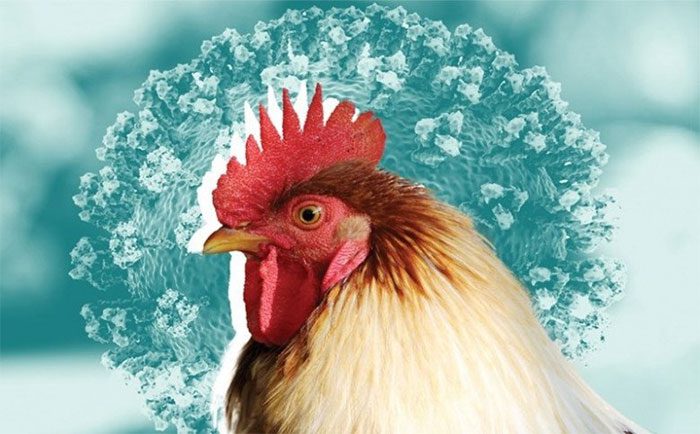The ways in which the A/H5 flu virus spreads to humans, symptoms, virus survival duration, and the safety of using poultry products are common concerns about avian influenza.
Information provided by the Ho Chi Minh City Disease Control Center to the community.
Avian influenza A/H5 is an acute infectious disease caused by a particularly dangerous virus.
The disease has a high transmission rate among bird species and poultry, occasionally infecting humans from animals. It is difficult to transmit from person to person.
Avian influenza can cause severe complications and a high risk of death in humans.
How does A/H5 flu spread to humans?
Avian influenza occurs in poultry species such as chickens, turkeys, ducks, geese, quails, pigeons, ostriches, wild birds, and mammals, from which it can spread to humans.

The disease has a high transmission rate among bird species and poultry.
Most human cases are associated with close contact with infected live or dead poultry or environments contaminated with the virus.
There is no evidence that the disease spreads to humans through properly processed and well-cooked food, nor is there person-to-person transmission.
What are the symptoms of A/H5 flu in humans?
Symptoms of infection may include:
- Fever (often high, over 38 degrees Celsius).
- Discomfort.
- Cough.
- Sore throat.
- Muscle pain.
- Other symptoms such as abdominal pain, chest pain, diarrhea.
– The disease poses a risk of severe progression and can lead to death.
Where is the A/H5 virus found?
The virus is present in most internal organs of infected animals, primarily in feces, secretions such as nasal discharge and saliva from the infected animal.
How long can the virus survive?
The virus tends to survive longer in the air at low humidity and in feces at low temperature and high humidity conditions. It can survive up to 35 days in poultry housing at low temperatures and up to 3 months in the feces of infected poultry.
What signs indicate sick poultry?
Highly pathogenic avian influenza has a short incubation period, usually 1-3 days, and can be longer depending on the virulence of the virus.
Chickens typically show symptoms such as abnormal walking, fatigue, and clustering in groups. Respiratory symptoms include swollen eyelids and excessive tearing. Many chickens may exhibit swollen joints, enlarged heads and faces, cyanotic combs and wattles, and subcutaneous hemorrhages. Chickens can also suffer from diarrhea, with watery droppings that appear white or bluish-white.
Ducks often carry the virus but rarely show clinical symptoms, making them a primary source of spreading the virus into the environment.
Is it safe to use poultry and bird products?
Using poultry and bird products is only safe when they are properly processed and thoroughly cooked, as the virus is “sensitive” to heat. Normal cooking temperatures will effectively kill the virus.




















































